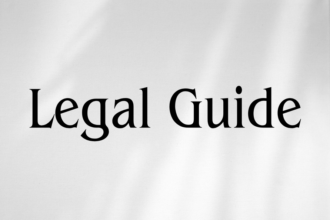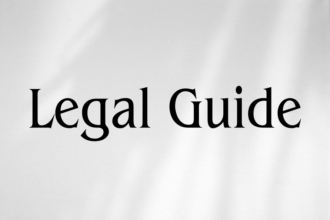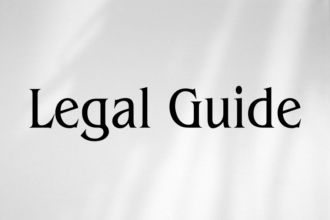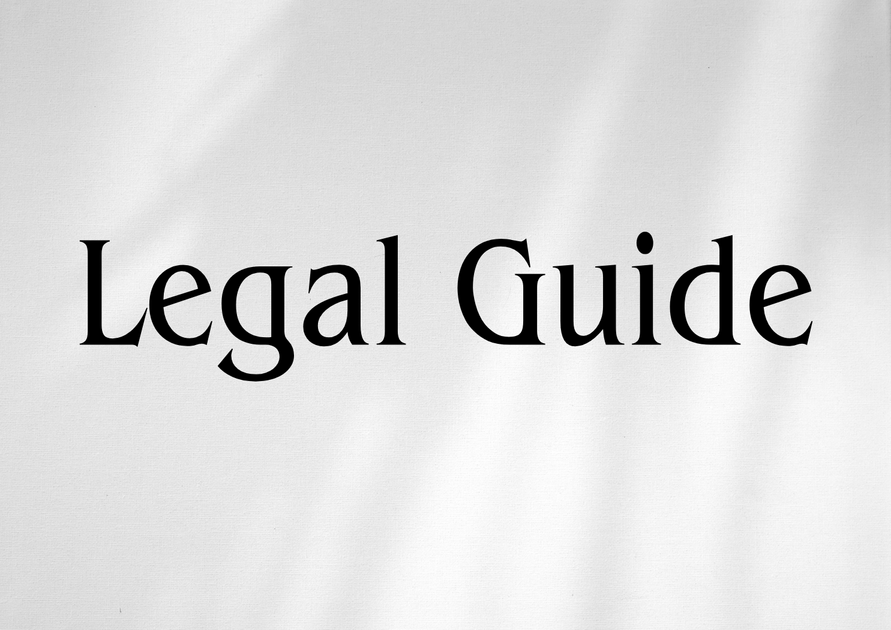Introduction: Protecting AI Innovations in the UAE Legal Landscape
Artificial Intelligence (AI) technologies now underpin vital sectors of the UAE economy—ranging from financial services and aviation to healthcare and logistics. As the UAE steers towards its ambitious ambitions outlined in the National AI Strategy 2031 and UAE Centennial 2071, local and international organizations are investing heavily in advanced AI software development. Amid this boom, the legal protection of AI-related trade secrets is of paramount concern for business owners, technology leaders, HR professionals, and in-house legal advisors. Safeguarding proprietary algorithms, models, source code, and confidential datasets is not merely a matter of competitive advantage; it is essential for regulatory compliance and reputational security.
Recent legislative changes—most notably Federal Decree-Law No. 34 of 2021 concerning the Fight Against Rumours and Cybercrimes and Federal Decree-Law No. 31 of 2021 (the UAE Penal Code), alongside updates to the Federal Decree-Law No. 36 of 2021 (on the Regulation and Protection of Industrial Property Rights)—have reshaped the compliance landscape for trade secret protection. This consultancy-grade article provides an in-depth analysis of how UAE law shields AI software trade secrets, details compliance strategies, and offers practical illustrations to favourably guide executives and legal teams during 2025 and beyond.
Table of Contents
- Legal Framework for Trade Secret Protection in the UAE
- What Qualifies as an AI Software Trade Secret?
- Legal Mechanisms Safeguarding Trade Secrets: Provisions and Enforcement
- Recent Legal Updates: Key Changes Impacting Trade Secrets in 2025
- Risks of Non-Compliance and Litigation Trends
- Practical Compliance Strategies for UAE Organizations
- Case Studies and Hypothetical Scenarios
- Conclusion and Forward-Looking Guidance
Legal Framework for Trade Secret Protection in the UAE
Trade secrets—especially those underpinning AI software—enjoy multi-layered legal protection in the UAE. Key statutes include:
- Federal Decree-Law No. 36 of 2021 on Industrial Property Rights: Chapter Nine sets detailed parameters for trade secret protection, introducing modern definitions and enforcement mechanisms.
- Federal Decree-Law No. 34 of 2021 on Cybercrimes: Intensifies penalties for unauthorized access, misuse, or disclosure of data considered as confidential or secret.
- Penal Code (Federal Decree-Law No. 31 of 2021): Codifies criminal liabilities for theft, unauthorized disclosure, or commercial espionage of trade secrets.
- The UAE Labour Law (Federal Decree-Law No. 33 of 2021): Provides for non-disclosure and non-compete obligations, especially for employees and contractors handling sensitive AI projects.
These laws are further reinforced by ministerial guides and circulars issued by the Ministry of Justice and Ministry of Human Resources and Emiratisation (MOHRE), providing direction for digital evidence handling and workplace confidentiality protocols.
Why a Robust Legal Approach Matters in 2025
AI software R&D is collaborative and mobile. The risk of data leaks—whether through departing employees, external contractors, or cyber-intrusions—has never been higher. With the UAE’s growing reputation as a global tech hub, regulatory scrutiny is intensifying, and victims of trade secret misappropriation must show conscientious compliance with statutory standards to secure redress in local courts.
What Qualifies as an AI Software Trade Secret?
Under Article 64 of Federal Decree-Law No. 36 of 2021, a trade secret is defined as any information “not commonly known among or readily accessible to those within the circles that usually deal with this category of information, and which has a commercial value due to its secrecy.” For AI software, this can mean:
- Proprietary source code and object code;
- Machine learning algorithms and training methodologies;
- Confidential training data and annotated datasets;
- Model weights and architectural blueprints;
- Engineering processes, test results, or product roadmaps;
- Non-public application programming interfaces (APIs).
However, to benefit from legal protection, organizations must prove that:
- Reasonable measures were taken to maintain secrecy;
- The information has commercial value due to its confidentiality;
- It is not generally known nor easily ascertainable by others in the field.
Regulatory Perspective: Table Summary of Trade Secret Elements (Pre-2021 vs. Post-2021)
| Element | Old Legal Framework | Current (Federal Decree-Law No. 36 of 2021) |
|---|---|---|
| Definition of Trade Secret | Narrow, focused on industrial know-how | Explicitly includes data, algorithms, systems, business info |
| Requirement for Secrecy Measures | Vague, not always explicit | Clear requirement for demonstrable protective actions |
| Scope of Civil Remedies | Restricted; limited commercial claims possible | Broader, including injunctions, damages, account of profits |
| Criminal Liabilities | Scattered, not AI-specific | Centralized, with digital/cyber emphasis |
Suggested Visual: Comparative table highlighting expanded scope under the 2021 updates, emphasizing AI-specific relevance.
Legal Mechanisms Safeguarding Trade Secrets: Provisions and Enforcement
1. Direct Legal Protection (Statutory & Criminal Remedies)
Federal Decree-Law No. 36 of 2021—especially Articles 64 to 70—empowers right holders to bring actions against unlawful acquisition, use, or disclosure of trade secrets related to AI software. This includes situations where information is obtained through theft, unauthorized access, or contractual breach.
Criminal Deterrents: Articles 432-436 of the Penal Code and provisions within Federal Decree-Law No. 34 of 2021 criminalize unauthorized disclosure and deliberate acquisition of confidential AI data. Penalties can include substantial fines and imprisonment.
2. Contractual Safeguards (Employee and Third-Party Management)
The law encourages continual enforcement via:
- Robust NDAs and confidentiality clauses for employees and collaborators;
- Explicit IP and trade secret provisions in employment contracts (especially in R&D or engineering departments);
- Contractual non-compete and non-solicit restrictions (within limits of the UAE Labour Law and Cabinet Resolutions on human resources).
Professional Insight: UAE courts regularly assess the clarity and reasonableness of such contractual clauses. Mere stipulation is not sufficient; proactive enforcement and demonstrable training efforts strengthen legal recourse.
Recent Legal Updates: Key Changes Impacting Trade Secrets in 2025
The UAE legislator has acted decisively to modernize its legal toolkit, recognizing the strategic significance of AI. Notable recent developments include:
- Expansion of ‘Trade Secret’ Definition: The law now explicitly protects digital assets, code repositories, model architectures, and non-physical datasets integral to AI solutions.
- Heightened Enforcement: Federal Decree-Law No. 34 of 2021 grants authorities broader investigative powers—including digital forensics and search capabilities—when responding to complaints of unauthorized AI trade secret use or data breaches.
- Stricter Penalties: Infractions such as AI algorithm misappropriation now attract heavier fines and longer custodial sentences, reflecting the increased value and vulnerability of data-driven IP.
- Labour Law Synchronization: Cabinet Resolution No. 1 of 2022 clarifies when non-compete and confidentiality obligations are valid during and after employment, responding to the remote work boom in the technology sector.
Comparison Table: Penalties Pre- and Post-2021 Update
| Offence | Pre-2021 Penalty | Post-2021 Penalty (as of 2025) |
|---|---|---|
| Unauthorized Disclosure/Use | Up to AED 100,000 | Short custodial sentences | Up to AED 5 million | 2–5 years imprisonment in severe cases |
| Cyber-Enabled Theft of AI Data | Rarely recognized as criminal | Explicit criminalization with heavy sentences |
| Employee Misconduct (Breach of NDA) | Civil remedies emphasized | Direct criminal liability, in addition to civil claims |
Suggested Visual: Penalty matrix illustrating stringent punitive stance post-2021, with clear reference to AI software misuse.
Risks of Non-Compliance and Litigation Trends
In an era of legislative vigilance, organizations negligent in safeguarding trade secrets risk significant regulatory, financial, and reputational fallout. Key risks include:
- Regulatory Sanctions and Criminal Charges: Failure to implement basic confidentiality protocols or respond to breaches can trigger government investigations and direct criminal charges.
- Civil Litigation: Competitors or aggrieved partners may pursue substantial damages in the event of alleged AI trade secret leaks or misappropriation.
- Loss of Protection: Courts may deny enforceability of rights if the company cannot prove systematic and consistent secrecy practices.
- Market Trust Deficit: Publicized data leaks can diminish client confidence, attracting scrutiny from regulators and partners alike.
Litigation Trends to Watch in 2025
- Increase in Digital Evidence Admissibility: UAE courts, guided by Ministry of Justice protocols, increasingly rely on digital chain-of-custody evidence for establishing misappropriation.
- Growth in Cross-Border Disputes: As UAE companies collaborate internationally, the courts are handling more claims involving foreign defendants and multi-jurisdictional discovery.
- Recognition of ‘Constructive Knowledge’: Cases hinge not only on direct theft but also on reckless disregard for confidentiality—raising the bar for internal protocols and HR training.
Practical Compliance Strategies for UAE Organizations
Practical, results-driven action is vital for organizations to both claim and enforce trade secret protection:
1. Develop a Comprehensive Trade Secret Policy
Draft and disseminate clear policies defining what constitutes a trade secret in the AI context, how such data is stored, accessed, and transferred, and who bears responsibility for violations. Policies should be periodically evaluated and adjusted for regulatory updates.
2. Institute and Regularly Update Confidentiality Agreements
- Ensure all employees, contractors, and visiting partners sign NDAs tailored for digital and data-centric environments.
- Align contractual clauses with current expectations under Federal Decree-Law No. 36 of 2021.
3. Restrict and Monitor Access
Implement robust IT controls to limit access to AI code bases, datasets, and proprietary models on a strictly need-to-know basis. Deploy digital watermarking or access logging to provide traceable digital evidence.
4. Employee and Stakeholder Education
Conduct regular training and awareness programs for staff—emphasizing legal obligations and cyber hygiene, especially as AI engineering teams and data scientists often handle highly sensitive datasets.
5. Incident Response and Litigation Preparedness
Develop an actionable incident response plan—enabling immediate forensic investigation and rapid legal action should a leak or breach be suspected. Pre-identify legal counsel with cyber-law expertise to ensure swift case filing under UAE law.
Compliance Checklist Table: Enforcement Measures
| Compliance Measure | Status (Yes/No) | Last Reviewed | Responsible Department |
|---|---|---|---|
| Trade secret policy in place and up to date | |||
| NDAs & confidentiality clauses for all AI stakeholders | |||
| Access controls and monitoring | |||
| Regular staff training on data management | |||
| Incident response plan tested annually |
Suggested Visual: Editable compliance checklist table for in-house legal or HR teams to track privacy and IP compliance maturity.
Case Studies and Hypothetical Scenarios
Case 1: AI Software Developer Joins a Rival in Dubai
An AI engineer resigns from a UAE-based company and joins a direct competitor, deploying code snippets sourced from his previous employment. The originating employer, having robust NDAs and IT controls, secures a court-ordered injunction under Federal Decree-Law No. 36 of 2021, freezing all use of the misused code and commencing criminal proceedings under the Penal Code and Federal Decree-Law No. 34 of 2021. The competitor is forced to immediately cease AI project deployment and suffers significant reputational damage.
Case 2: Data Set Leak via Offshore Contractor
A UAE fintech outsources a data annotation task to an overseas firm. That contractor inadvertently exposes non-public customer datasets on an unsecured cloud platform. Even though the breach occurs abroad, the UAE company must demonstrate it took ‘all reasonable steps,’ such as contractual safeguards and periodic security audits, to mitigate liability and enforce remedies through UAE courts.
Case 3: Start-Up Lacks Trade Secret Policy
A technology start-up in Abu Dhabi suffers a code base leak but struggles to obtain legal redress due to lack of documented confidentiality protocols. The court finds insufficient evidence that the information met the statutory threshold for a trade secret—a cautionary tale for emerging ventures.
Insights from These Scenarios
- Legal recourse depends not only on breach occurrence but on the company’s preparedness, documentation, and preventative action.
- Cross-border incidents require multijurisdictional strategy and alignment with UAE dispute resolution mechanisms.
Conclusion and Forward-Looking Guidance
As the UAE accelerates its position as a premier digital economy and AI powerhouse, the legal protection of trade secrets in AI software has become both a regulatory imperative and a strategic necessity. The evolution of UAE laws, exemplified through Federal Decree-Law No. 36 of 2021 and supporting decrees, reflects not only international best practice but also an assertive local policy stance towards digital innovation and economic resilience.
For legal, HR, and technology leaders, the challenge is to maintain continual vigilance; the era of static policy documents and infrequent contractual reviews is over. Instead, organizations must implement dynamic compliance strategies—embracing legal, technical, and cultural pillars of trade secret protection. Failure to do so exposes companies to criminal, regulatory, and commercial risks that may threaten their role in the UAE’s new AI economy.
Best Practice Recommendations:
- Maintain up-to-date trade secret policies aligned with the latest statutory definitions and enforcement trends.
- Custom-tailor NDAs and employment contracts to reflect digital risks and AI-centric sensitivities.
- Invest continually in cyber hygiene technology and staff training, recognizing the mobile nature of AI innovation.
- Engage specialist legal professionals for periodic audits, incident response preparedness, and cross-border advisory support.
By placing trade secret security at the heart of organizational governance, UAE companies are not simply achieving compliance—they are laying the legal foundations for sustainable and responsible AI-powered growth.




